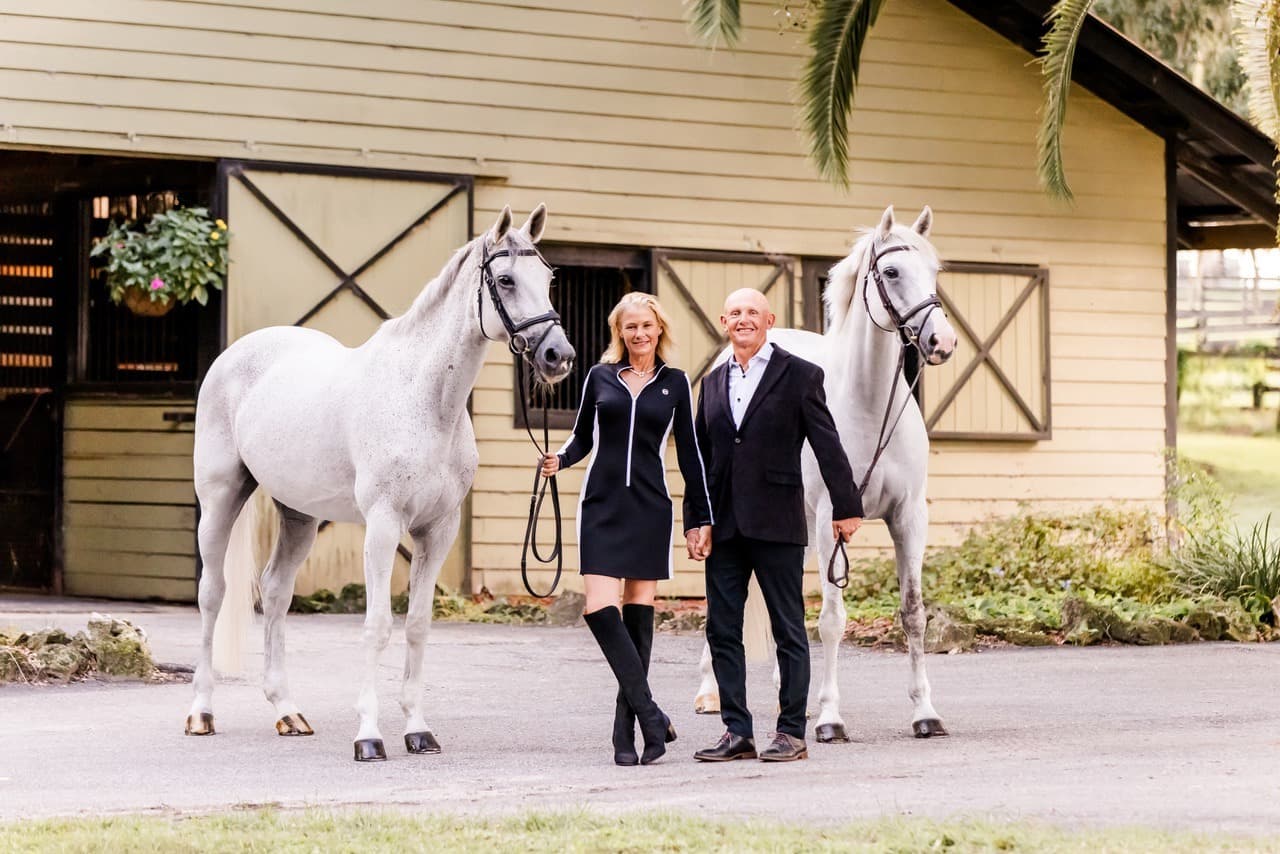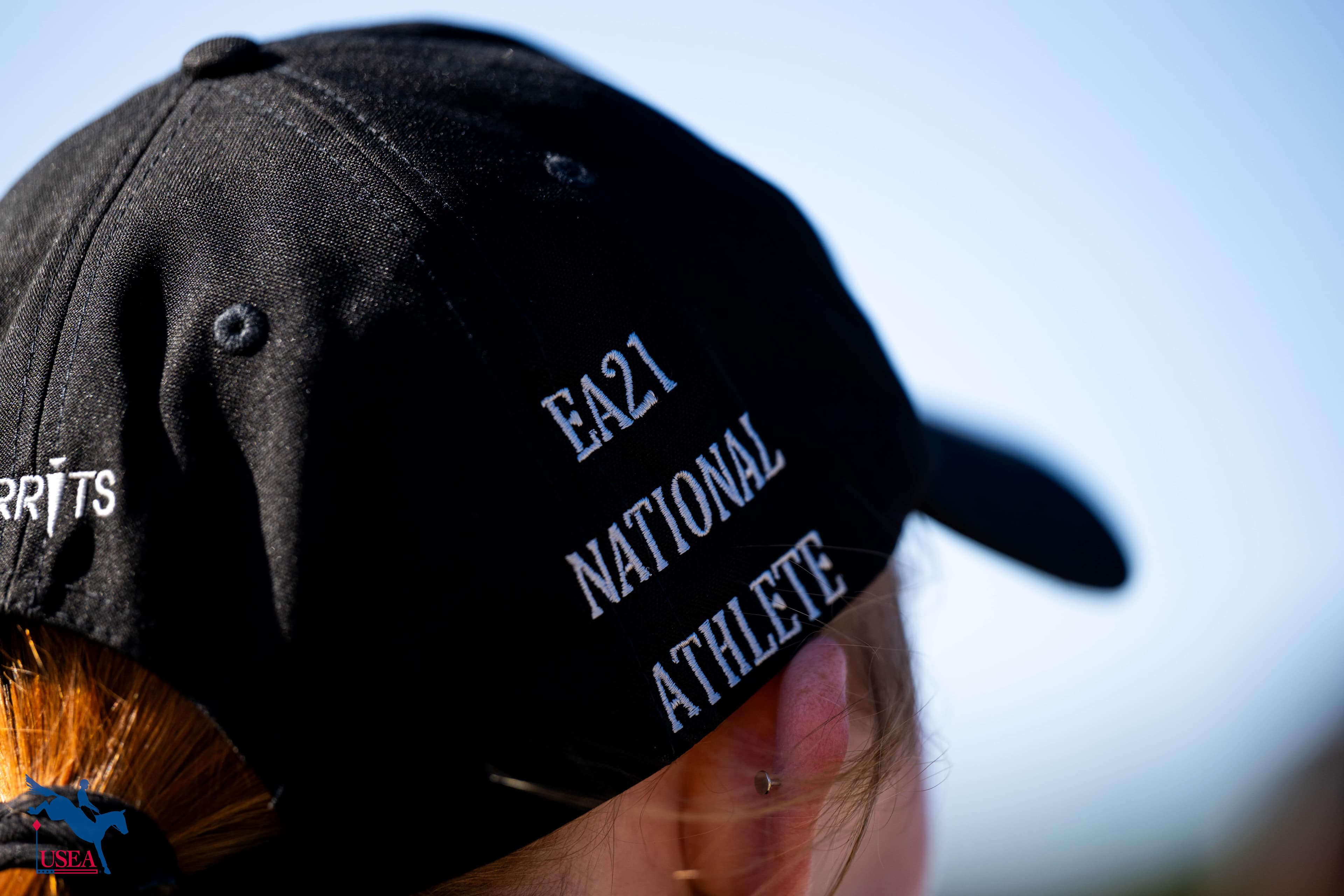A Tale of Two Mounds: Three Great Exercises Incorporating Terrain from Day Two of the ICP Symposium
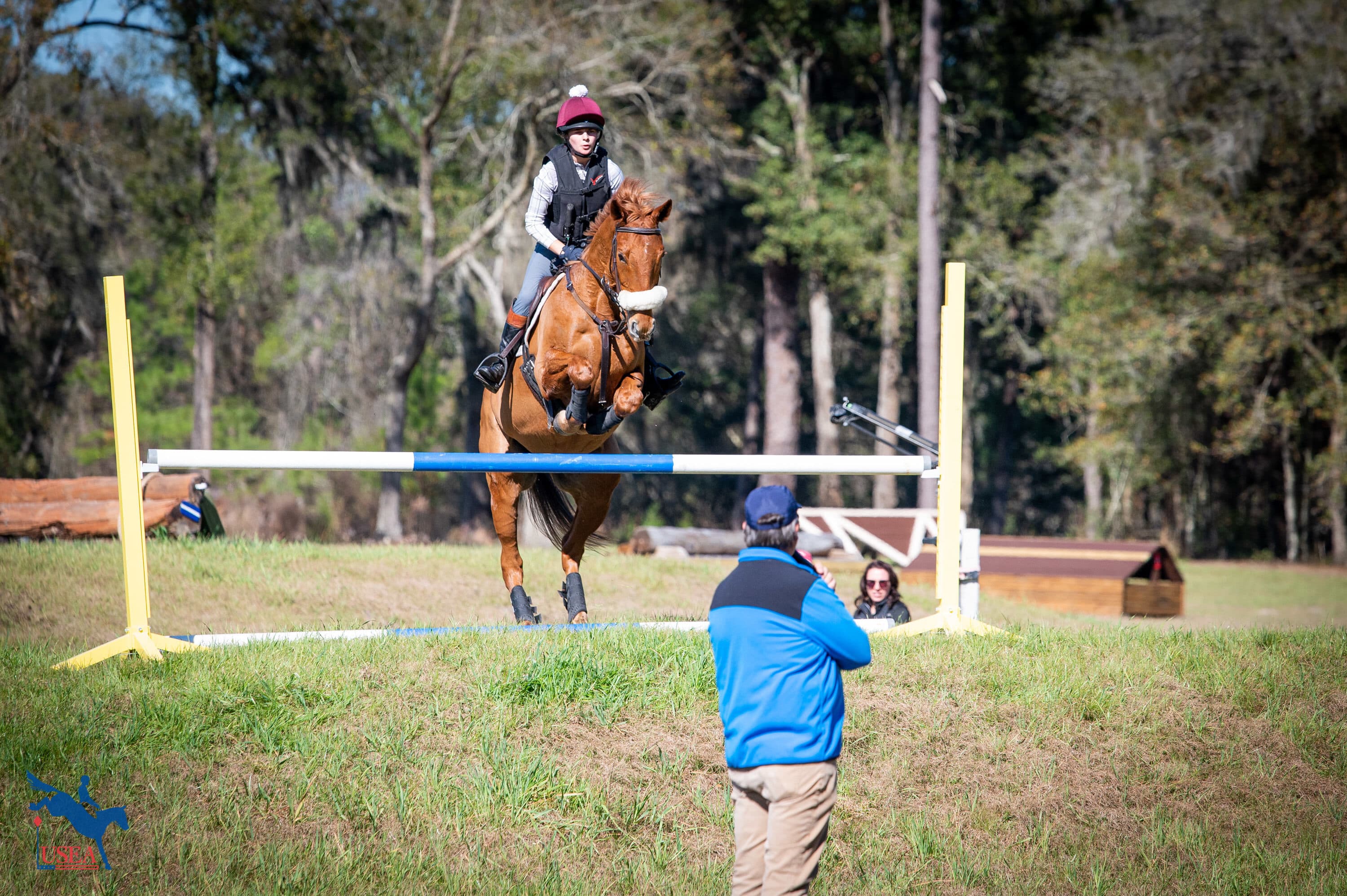
The second day of the USEA Instructors’ Certification Program (ICP) Symposium at BarnStaple South in Ocala, Florida focused on adapting each lesson to the rider you are teaching, especially while schooling cross-country. The morning opened up with an exceptional seminar over teaching modalities and sports psychology from Dr. Paul Haefner. The audience of over 140 attendees made up of instructors, riders, students, and parents listened intently as Dr. Haefner outlined the many different challenges eventing instructors face such as working with students of all ages, addressing the different ways each individual student learns and engaging students into becoming masters of the sport.
Following an overview of cross-country course design and risk management measures led by David O’Connor, the attendees made their way to the cross-country course at BarnStaple South to begin the educational exercises. Identical to yesterday’s format, the six demonstration riders, one rider for each level from Starter through Preliminary, were assigned to a breakout group led by an ICP faculty member. These groups observed their assigned rider as they warmed up for cross-country and worked collaboratively to create a lesson structured to that horse and rider's needs. From there, the ICP faculty member leading each group would give a 15-minute cross-country lesson based on the group’s assessment.
Three of the six lessons utilized a unique feature on the cross-country track, a pair of mounds close in proximity. Interestingly enough, the lessons that utilized the mounds were very different in skill level. Learn how the mounds were used differently for each rider and how you can mimic these exercises at home below:
Understanding the Horse You Have
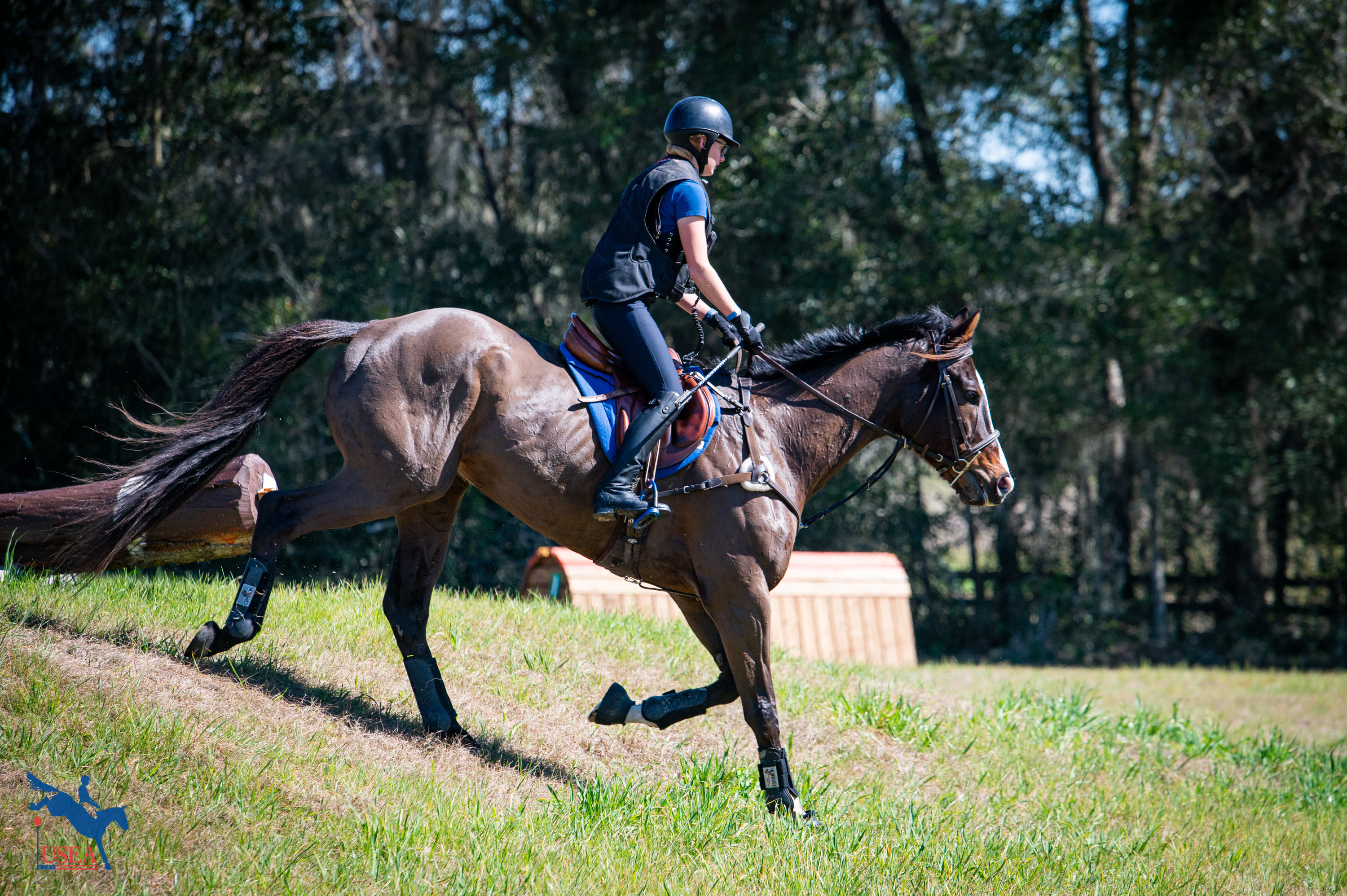
ICP Level V Instructor and five-star eventer Bec Braitling was the first to incorporate the two mounds in her lesson structure as she instructed demo rider Sarah Alexander and her 6-year-old Thoroughbred gelding Southern Humor (Alternation x Dixie Darling) in the Beginner Novice lesson. The duo were both fairly green with the horse recently coming off the track and into training to be an event horse. Braitling utilized a small log which was in the center of the first mound and a log pile at the center of the second mound as her jumps of choice. Following the pair’s warmup, Braitling had the horse and rider start with trotting up and down the sides of each mound to familiarize themselves with riding on the terrain and using the edge of the terrain and the crowd to help the horse turn to the next obstacle. She then incorporated the jumps, having the pair trot up the mound, jump the obstacle, canter down the mound, and then repeat that exercise going into the second mound, utilizing the two mounds as a half-circle track for the horse to follow along.
“For me, that horse in particular or any horse that wanted to rush a little at the fences benefits from this exercise,” commented Braitling. “By using the terrain to teach the rider that there was another horse available to her and that using her position effectively over the terrain would help her to find another horse in there that she didn’t know she had.”
If you want to mimic this exercise at home, Braitling encourages you to do so! Having two mounds of relative distance is not completely necessary, however. “I think you can find any piece of terrain, even a small piece, and put a show jump out there. Use your show jumps and put them in positions that are not natural and then challenge yourself in your turning exercises to incorporate the jump in your rideability and terrain,” she concluded.
It’s All About Balance
The next partnership to find themselves tackling the terrain was Training level representative Krista Wilson and her 9-year-old Warmblood mare, Stella. Led by Olympian and ICP Level V instructor Phyllis Dawson, the Training level exercise started off with an exercise on lengthening and shortening the stride before making their way to the mounds.
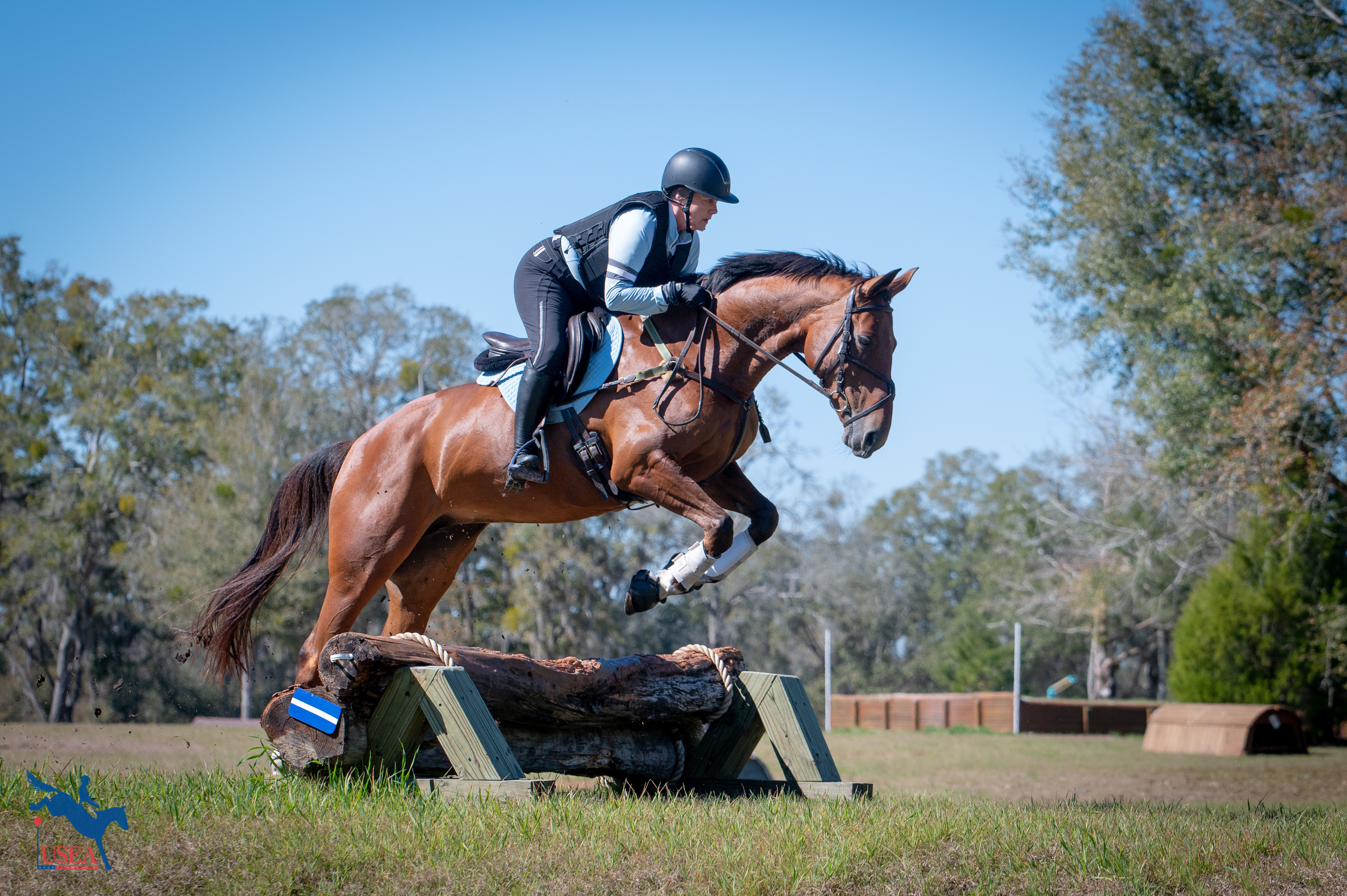
“When appropriate, it is a good way to start out a cross-country schooling, but it is not appropriate for everyone,” said Dawson of her galloping exercise which asked the rider to gallop to a certain point, then shift the horse down a gear to a controlled jumping canter without overutilizing your reins, and then make your way back to the higher gear again. “Before you start galloping and lengthening the stride, you want to make sure the control is good. With a very green horse, you are just going to keep things at the canter. Ultimately, before you get out competing you need to have the ability to gallop forward and bring back.”
After demonstrating their ability to adjust the pace, Dawson led the duo to the mounds for their jumping exercise and to continue showing off their new feel for the many gears that they had. Like the previous rider, Wilson and Stella would jump the jumps at the peak of the first mound, but would also add in a small cabin between the exit of the first mound and the entrance of the second to create a true half-circle jumping exercise. For Dawson, this exercise was the perfect opportunity for the Training level pair to learn to balance over the terrain, understand what energy they needed going up and down the mound and to ride a related distance on the cross-country course. For those without access to terrain immediately at home, Dawson encourages trainers to set up two simple fences with a related distance in between and ask the rider to execute that distance in varying strides. For example, jump it in five strides the first time, followed by six the next, and then back to five again.
Terrain Creates Instinct
As the final demonstration of the day, it seemed only fitting to have Olympian and Level V ICP Instructor David O’Connor close out the Symposium by facilitating the Preliminary lesson with rider Lilah Frank aboard her own 15-year-old Thoroughbred gelding Deadpool (Shot of Gold x Lucky Brick Rd). After warming up over a few jumps across flatter ground, O’Connor had Frank make her way towards the mounds where he had set up one show jump on the side of each mound in an angled line, with the second creating a direct line to a corner several strides after, followed by a ramp.
“[The riders] learn in terrain to let go and move, terrain is the fastest way to teach that in a controlled environment,” reflected O’Connor. “Use terrain to teach people instincts. In riding and cross-country especially, you can’t ever get away from your instincts. What you are looking for are instinctual moments such as the instinct to straighten or the instinct to understand that there has been a change of pace.”
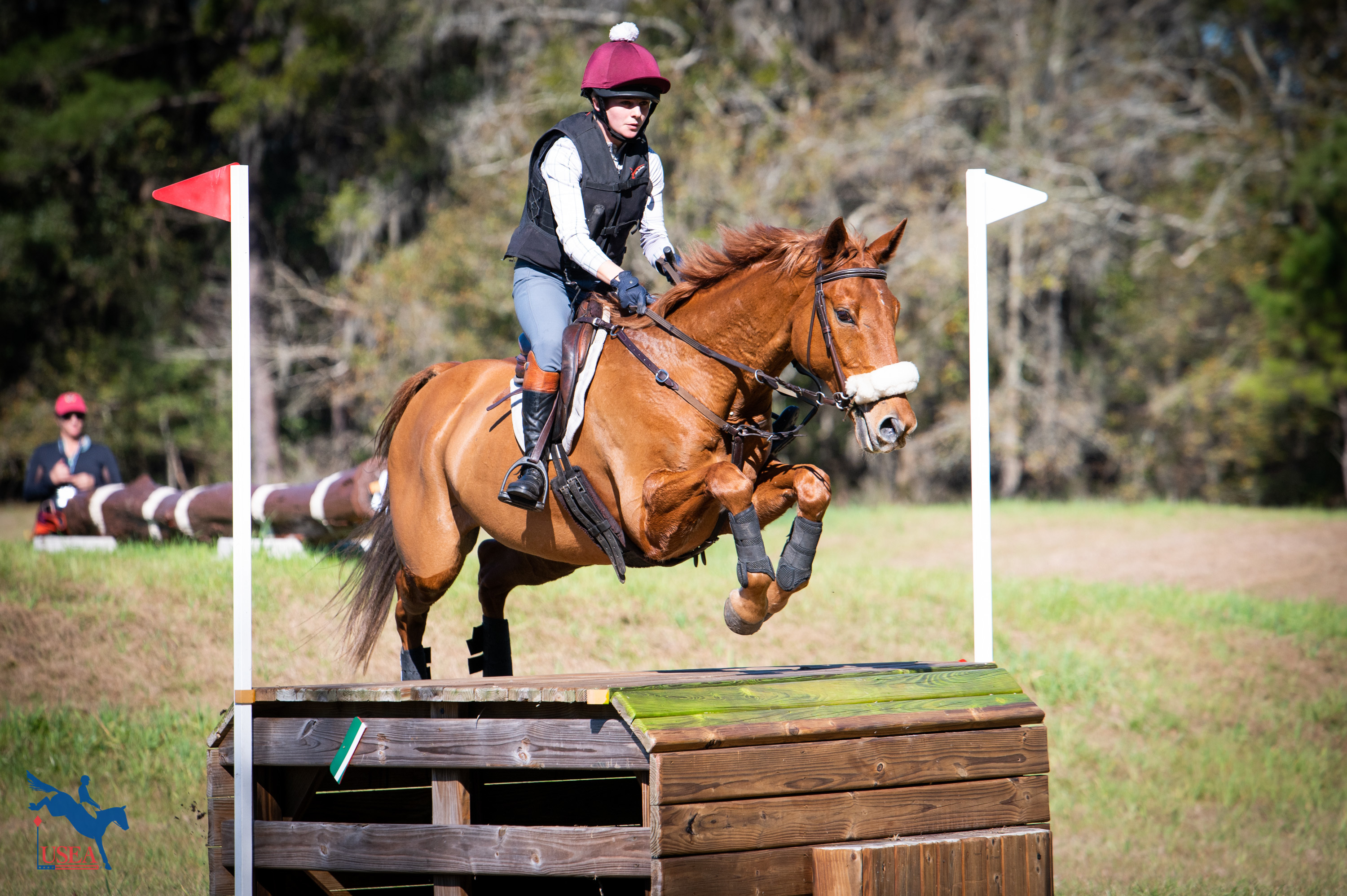
O’Connor began by introducing each jump in the exercise one at a time and gradually building on. He challenged Frank to halt several strides after the last fence to get her horse listening to her and thinking ahead for what would come next.
While O’Connor’s exercise today was geared for a more advanced rider, he shared how important it is to introduce all levels of riders to this type of riding. “You introduce terrain right off the bat. Beginner Novice riders will think they have conquered the world to have trotted up and down these mounds. You might not have them jump the show jumps as I did, but I would probably put the standards here and rails on the ground to have them have something to aim at.”
About the USEA Instructors’ Certification Program
Instructors are essential to the training of riders and horses for safe and educated participation in the sport of eventing. The USEA Instructors’ Certification Program (ICP) was initiated in 2002 to educate all levels of eventing instructors with crucial training principles upon which those instructors can continue to build throughout their teaching careers. ICP offers educational workshops and assessments by which both regular instructors, Level I through Level V, Young Event Horse (YEH) instructors, and Young Event Horse professional horse trainers can become ICP certified. Additional information about ICP’s goals, benefits, workshops, and assessments as well as names and contact information for current ICP-certified instructors, YEH instructors, and YEH professional horse trainers are available on the USEA website. Click here to learn more about the Instructors’ Certification Program.
The USEA would like to thank Stable Secretary and Parker Equine Insurance for sponsoring the Instructors’ Certification Program. Additionally, Parker Equine Insurance offers 5% off to all ICP instructors and Stable Secretary provides a 25% discount on their subscription services to all ICP instructors.














